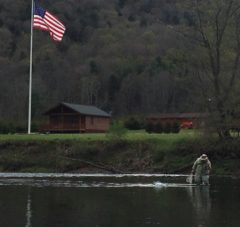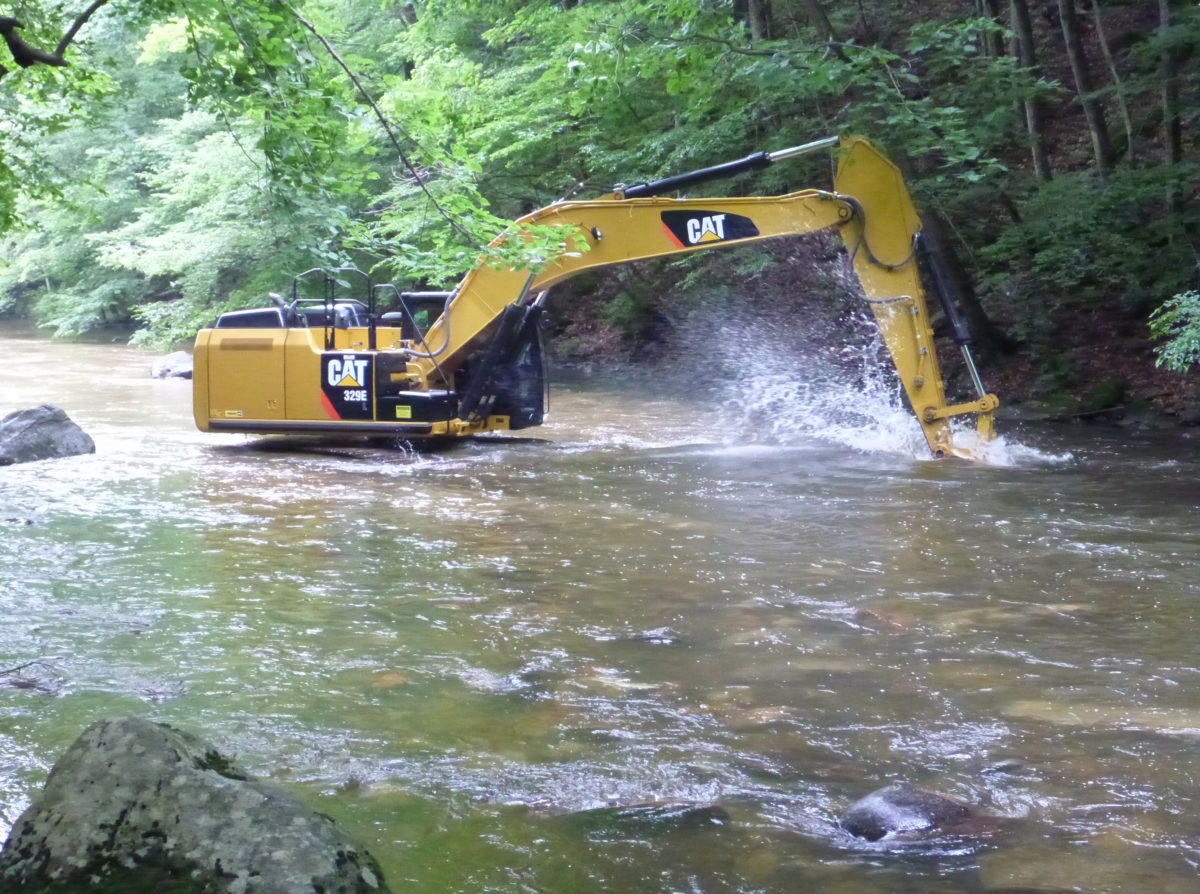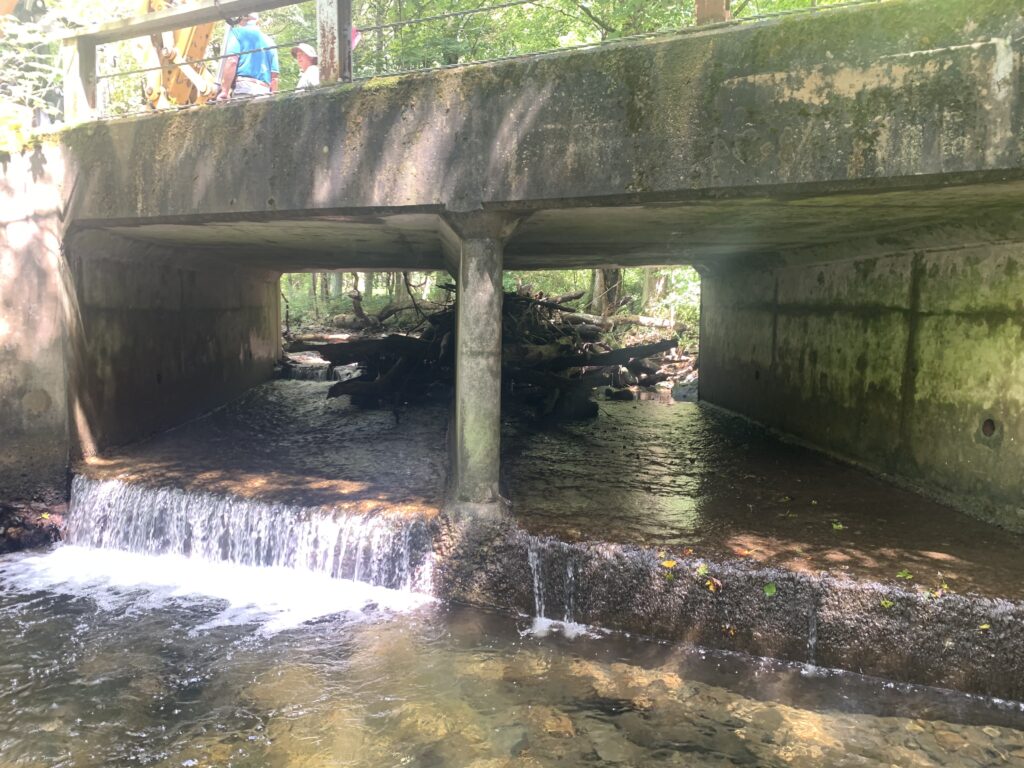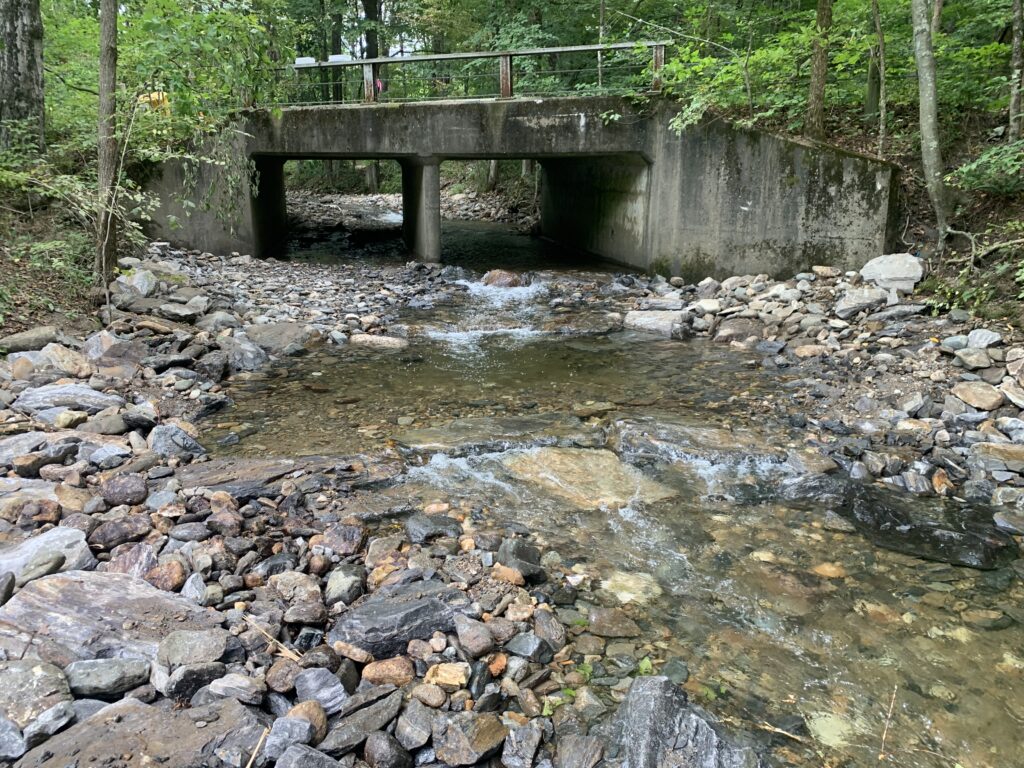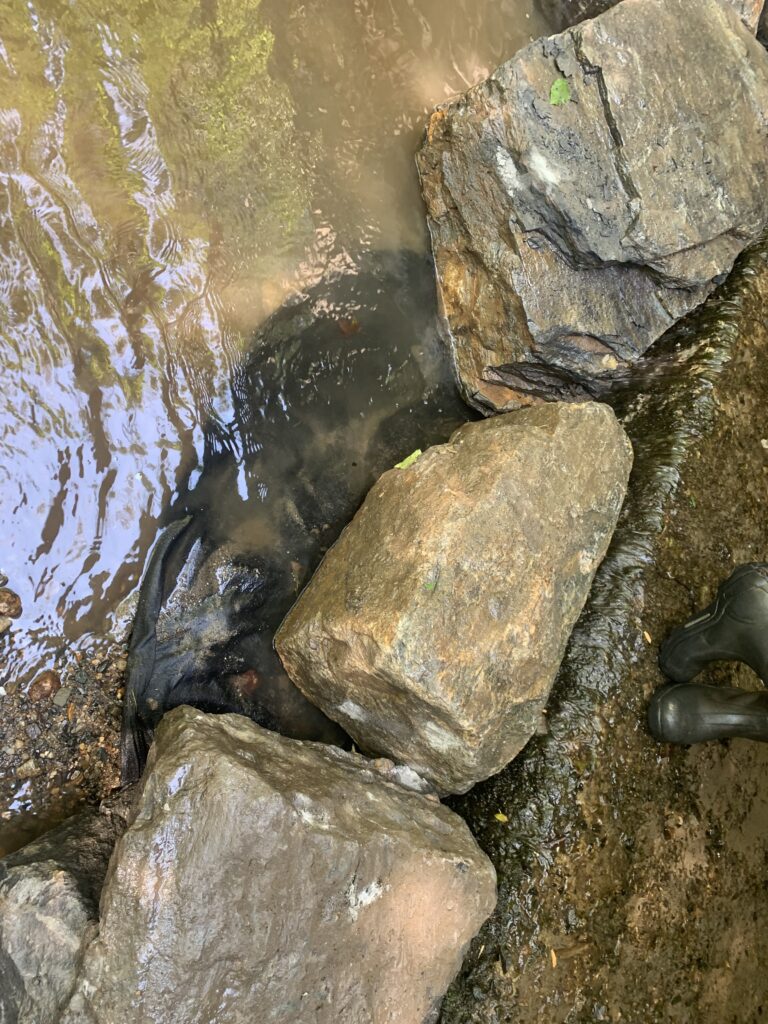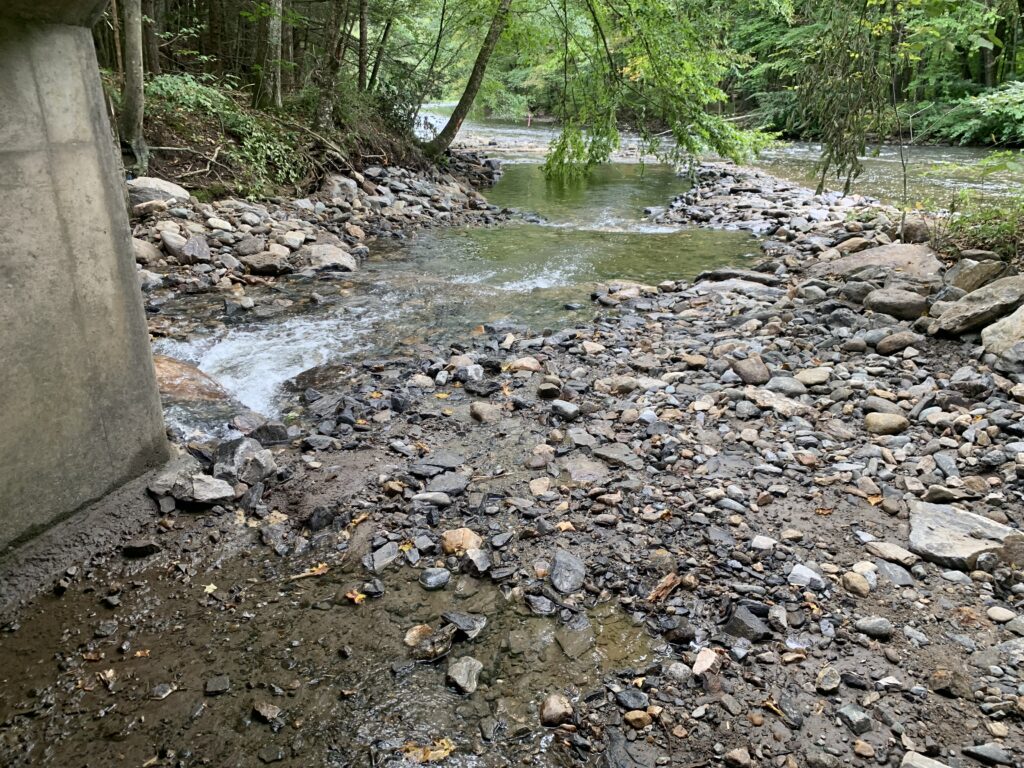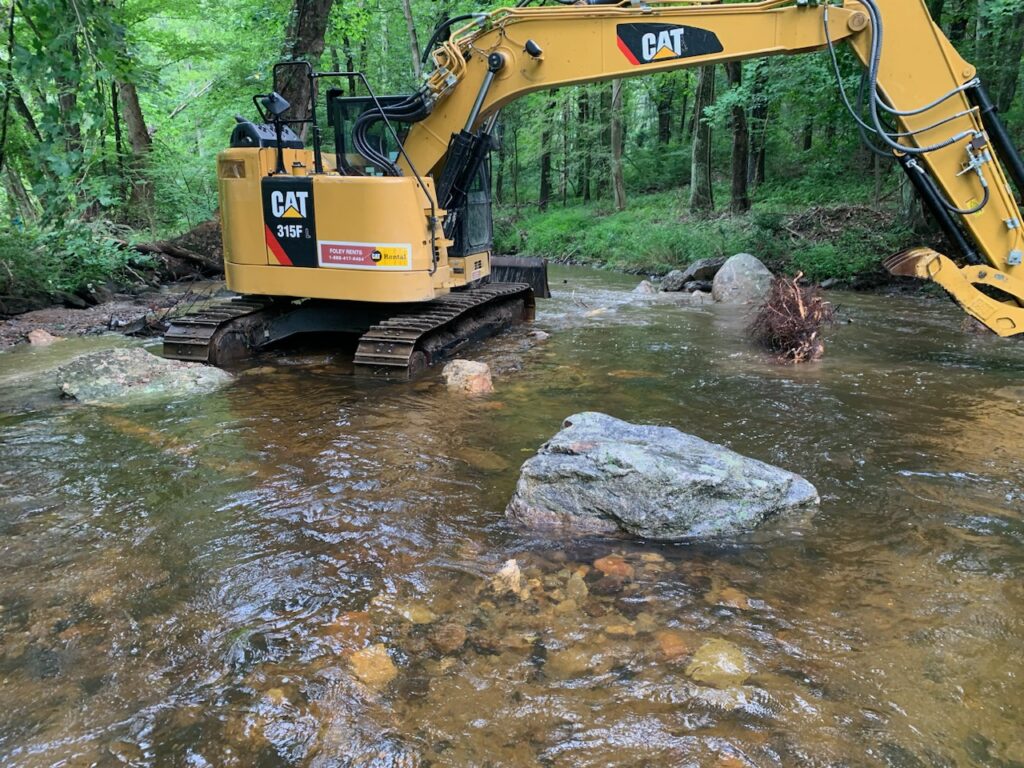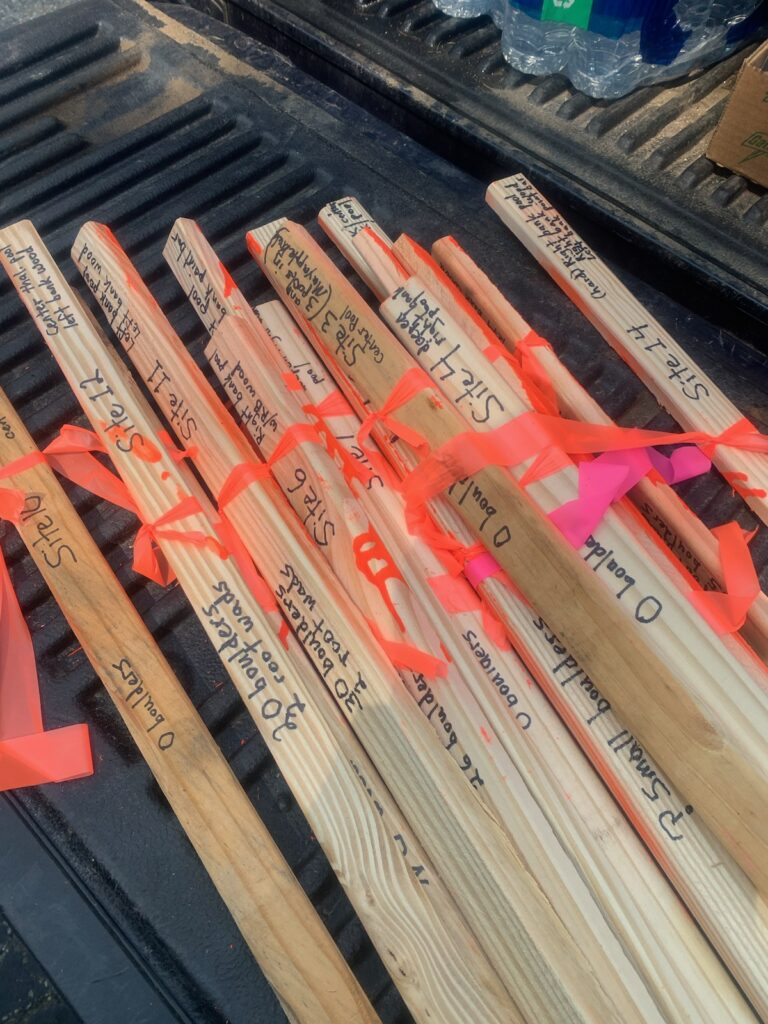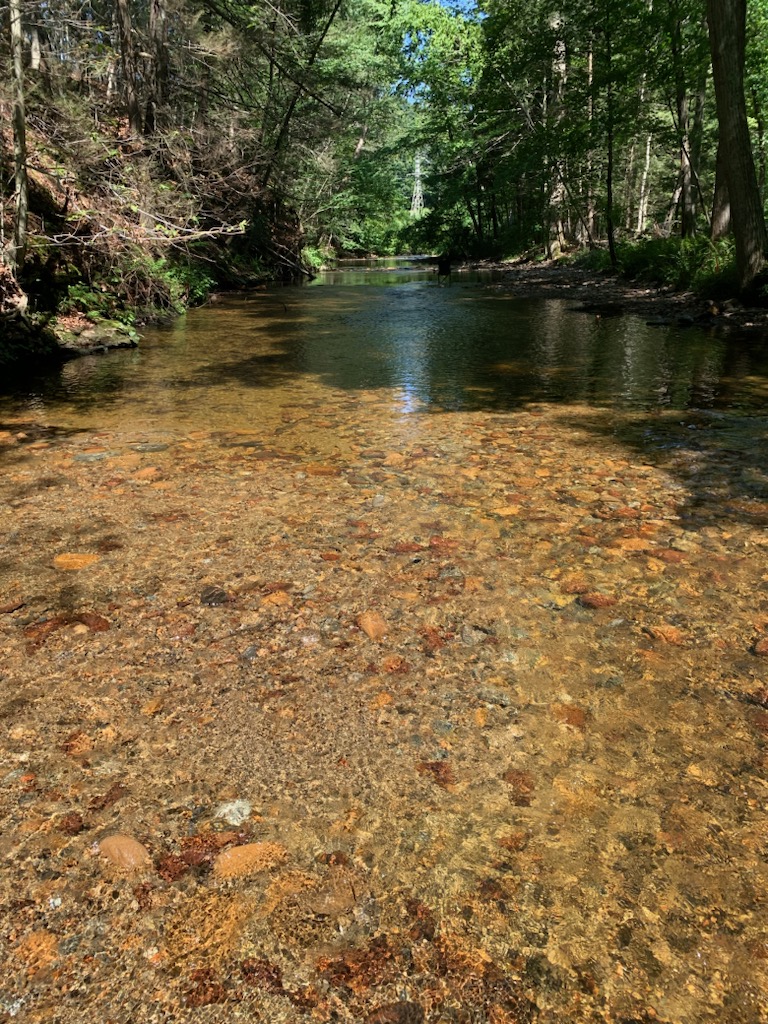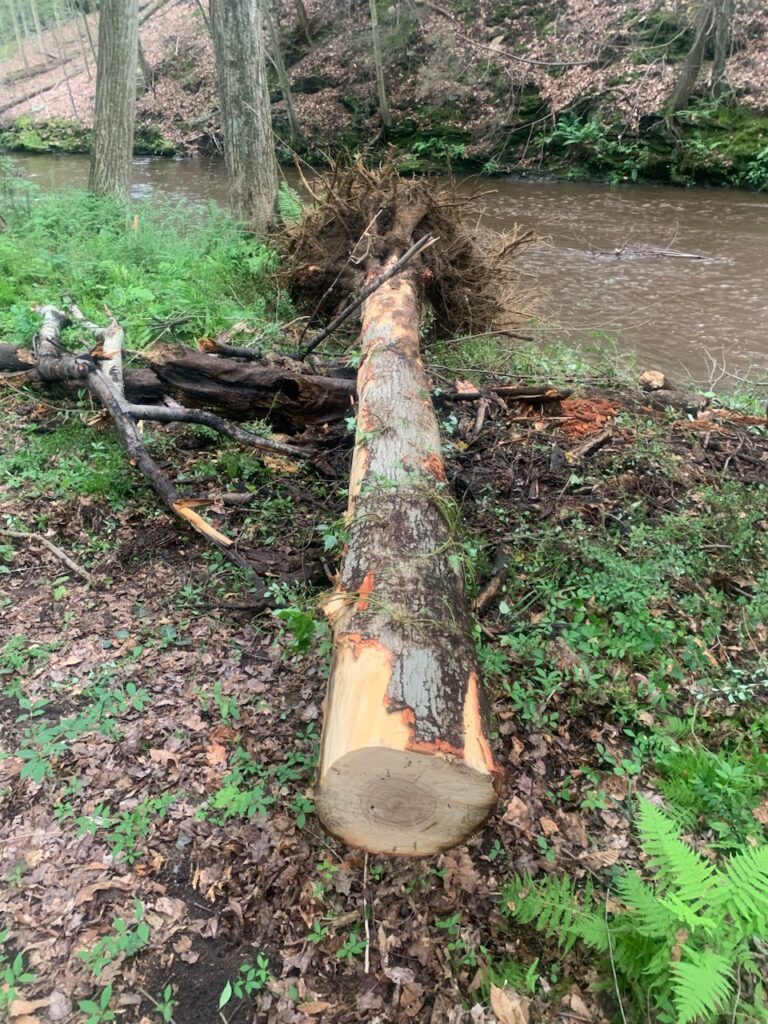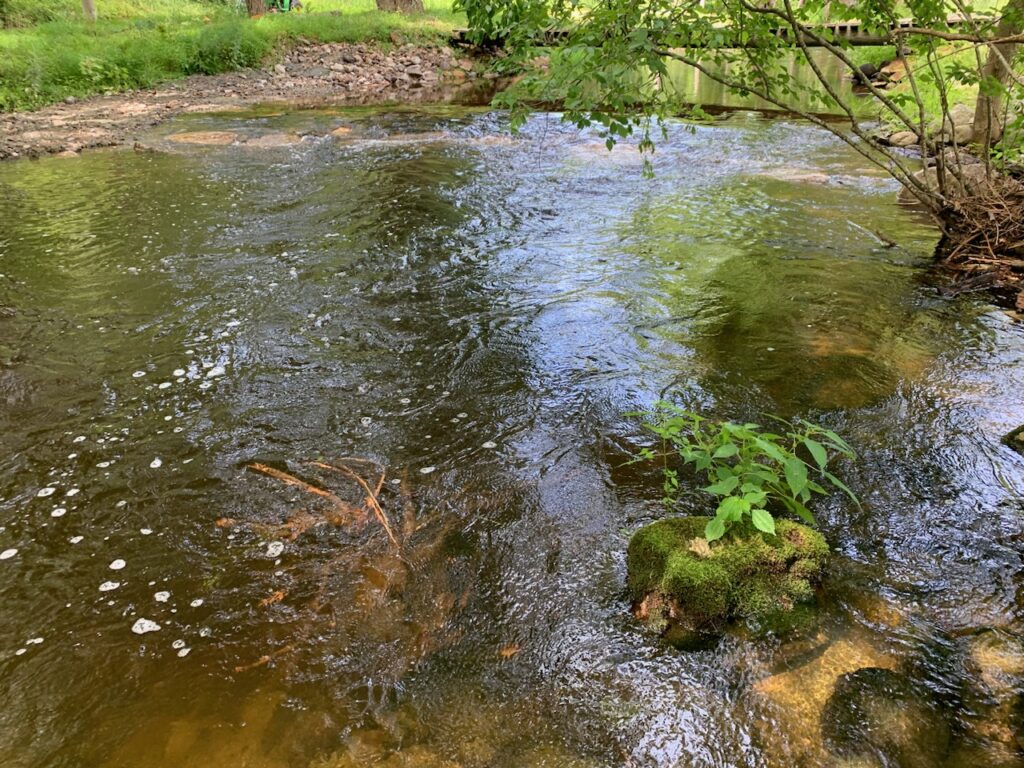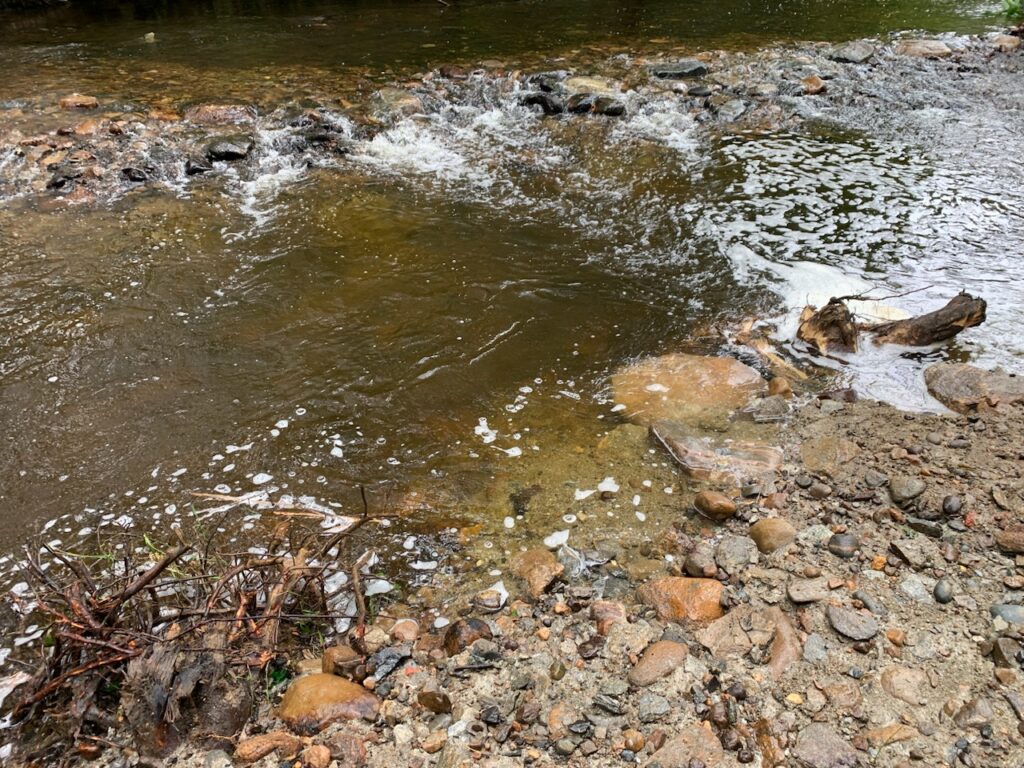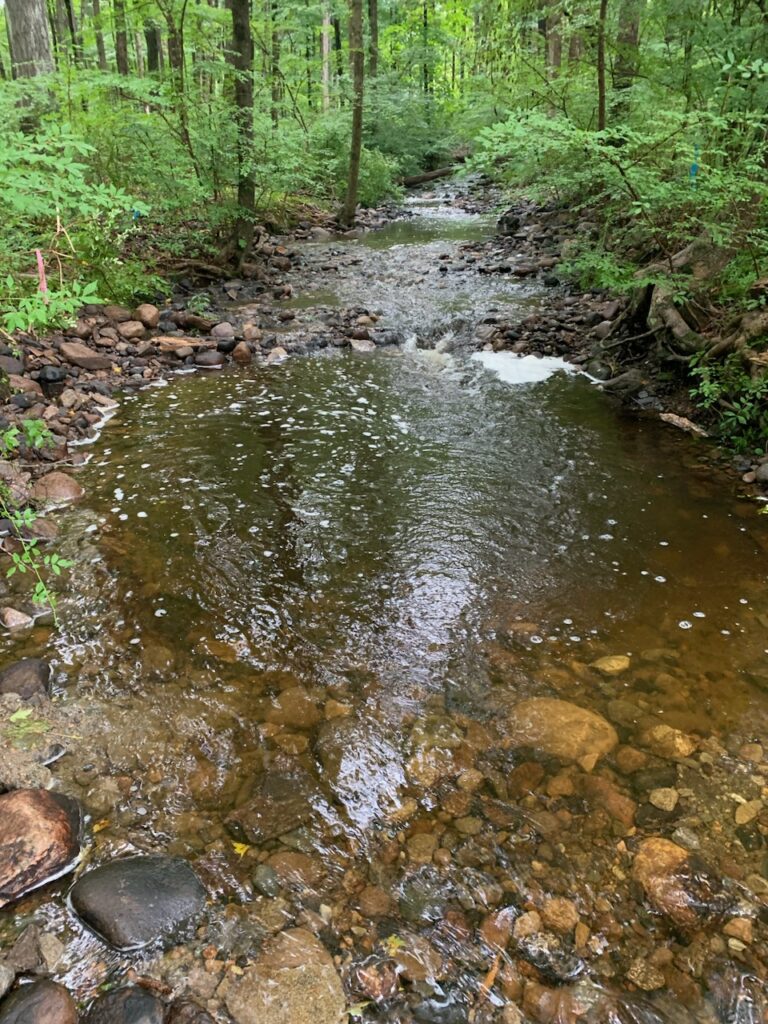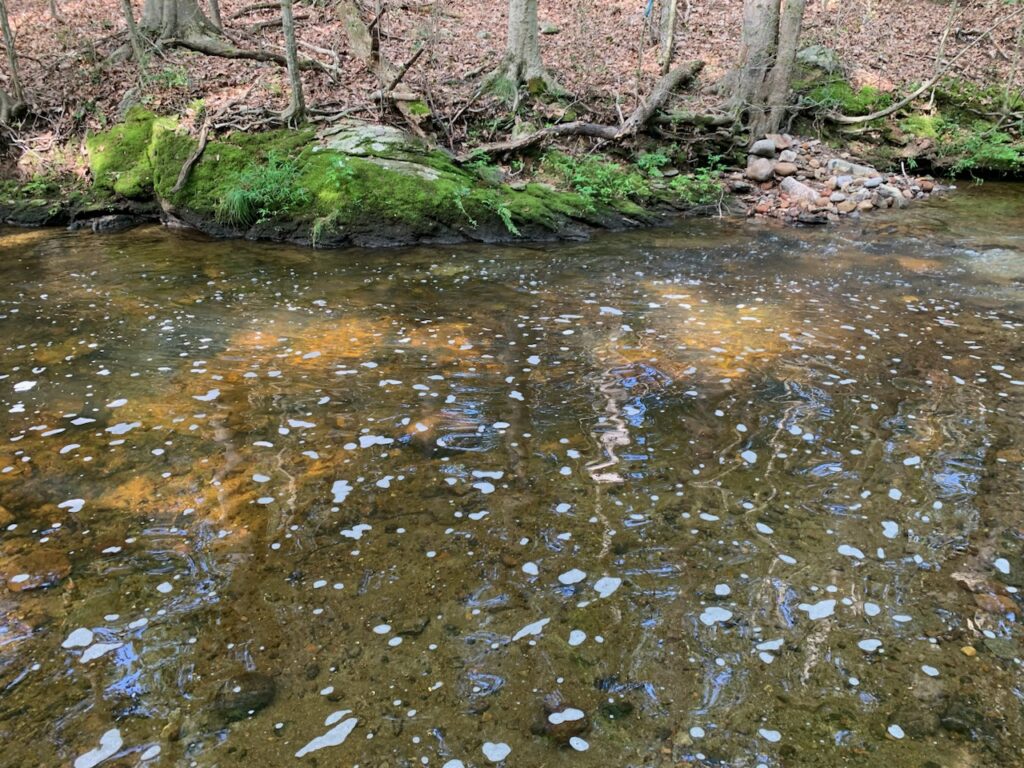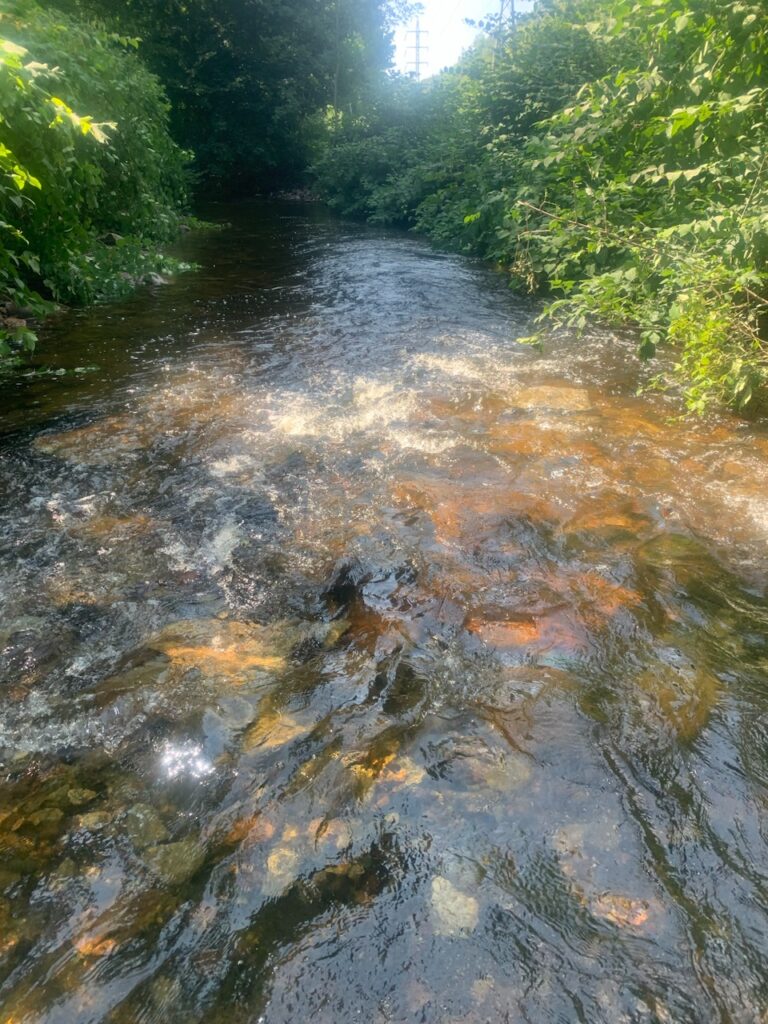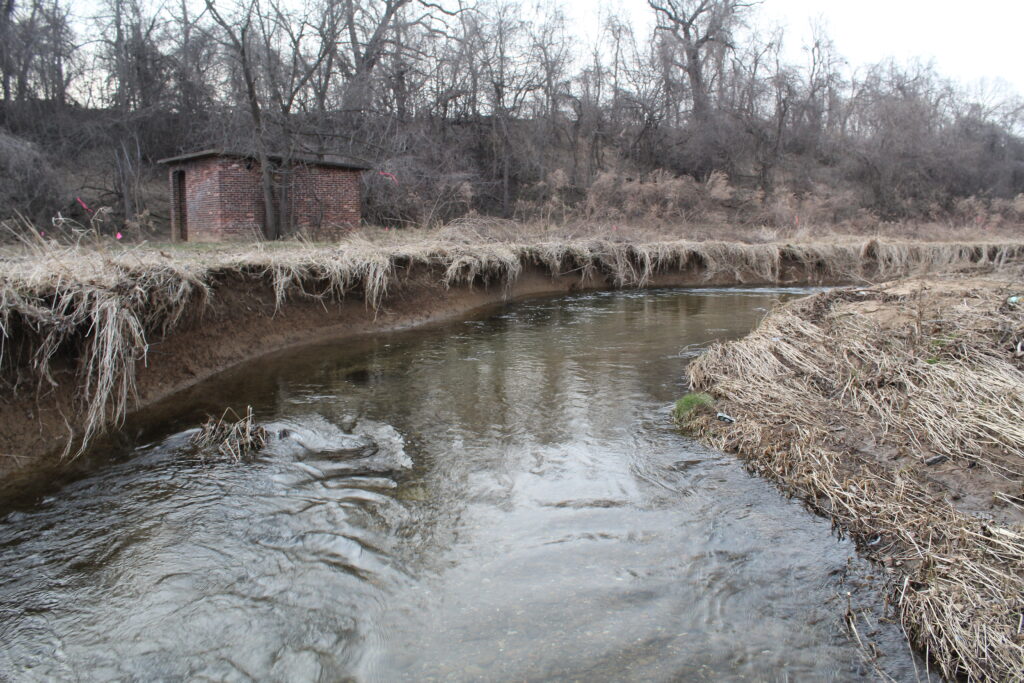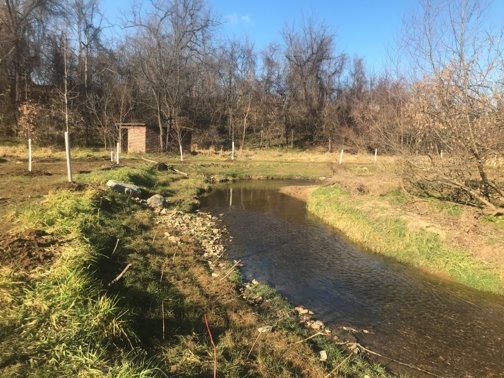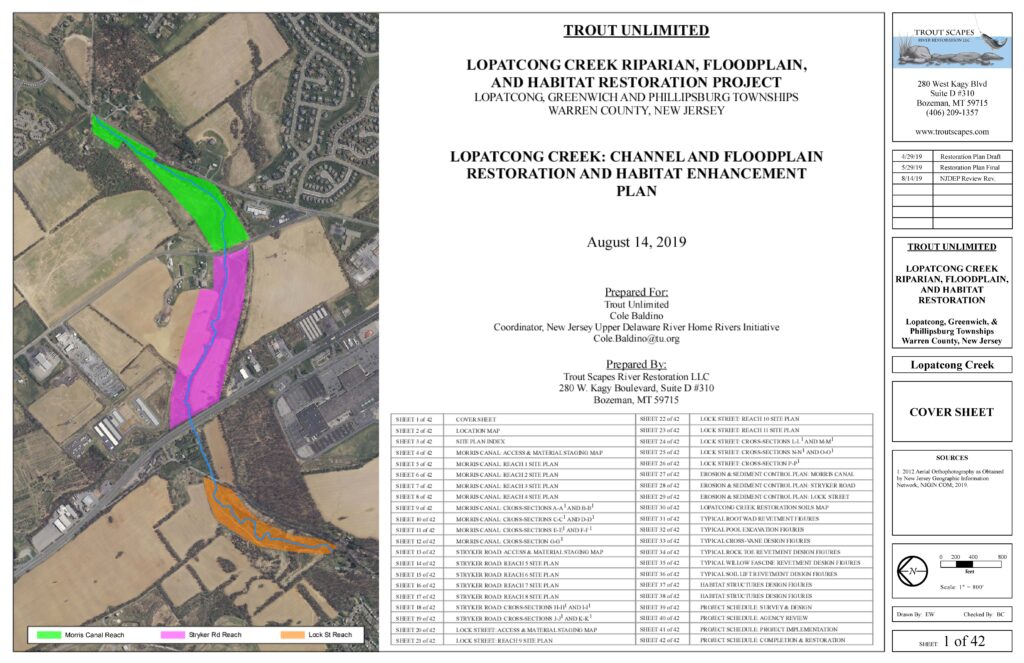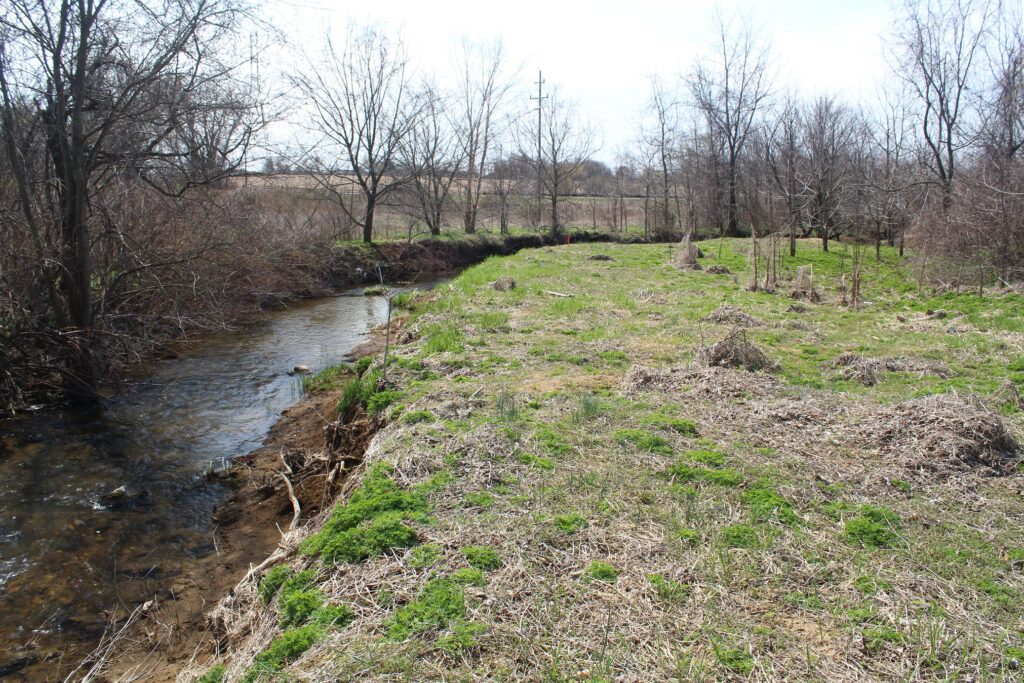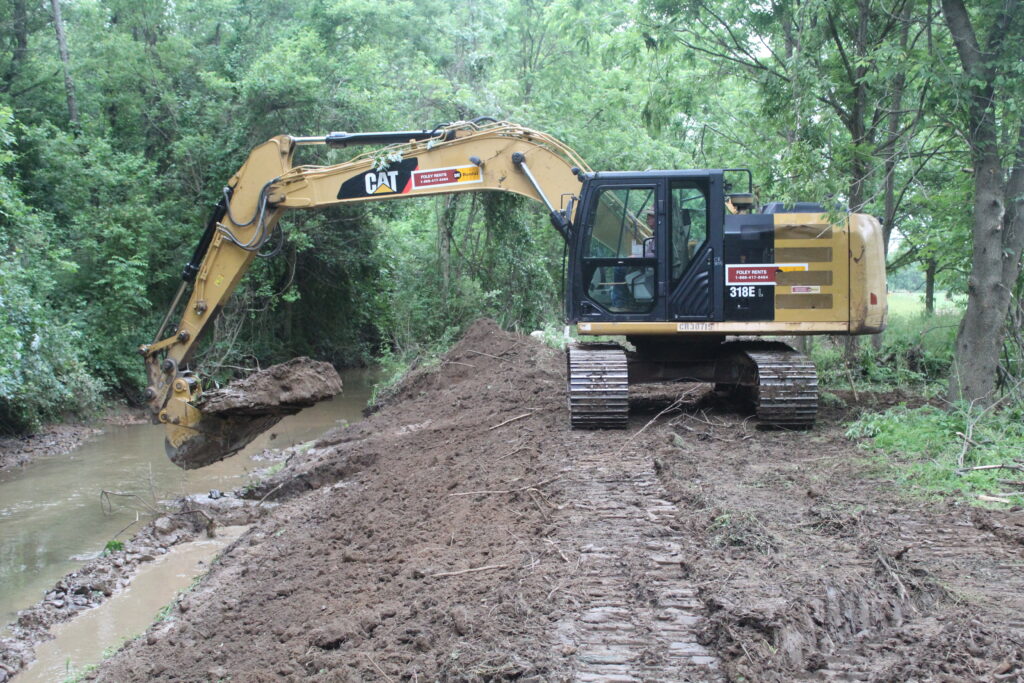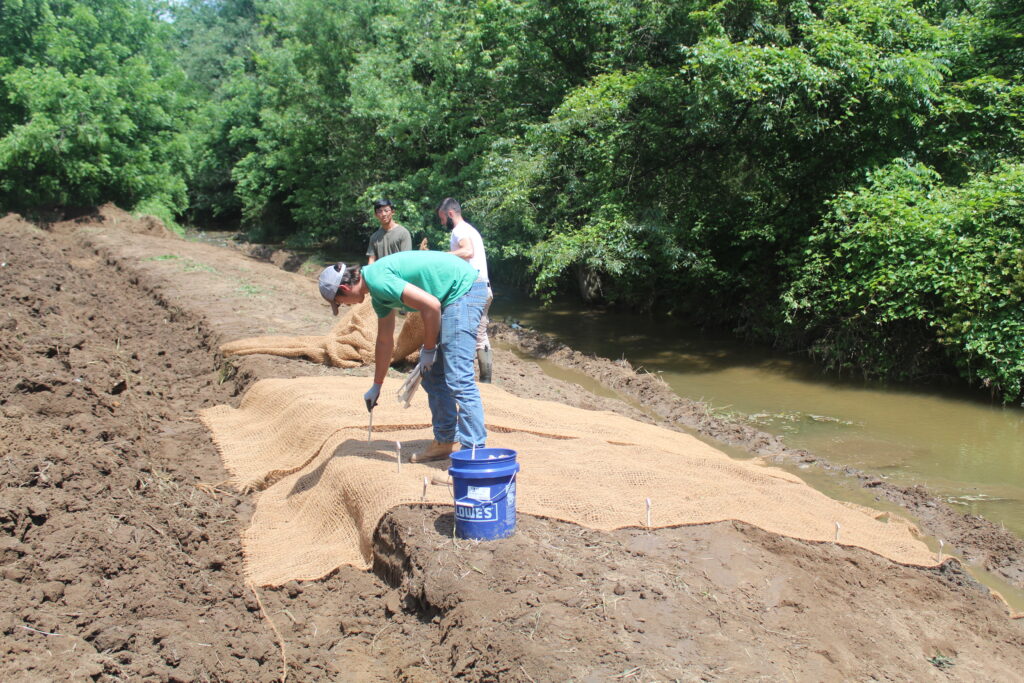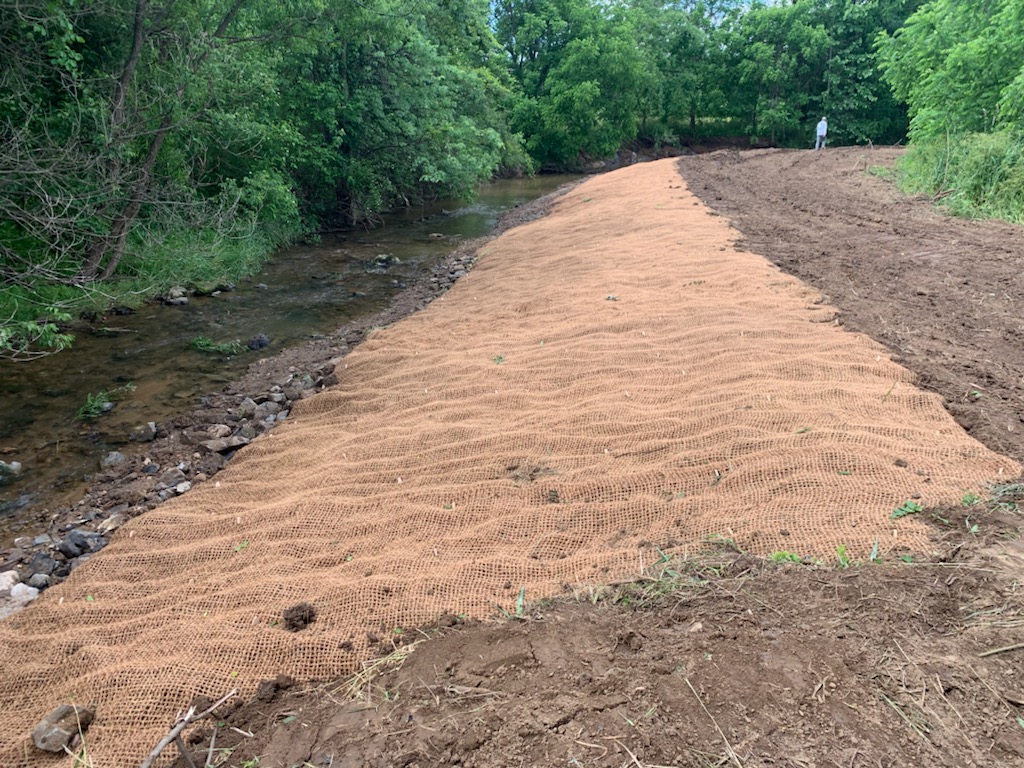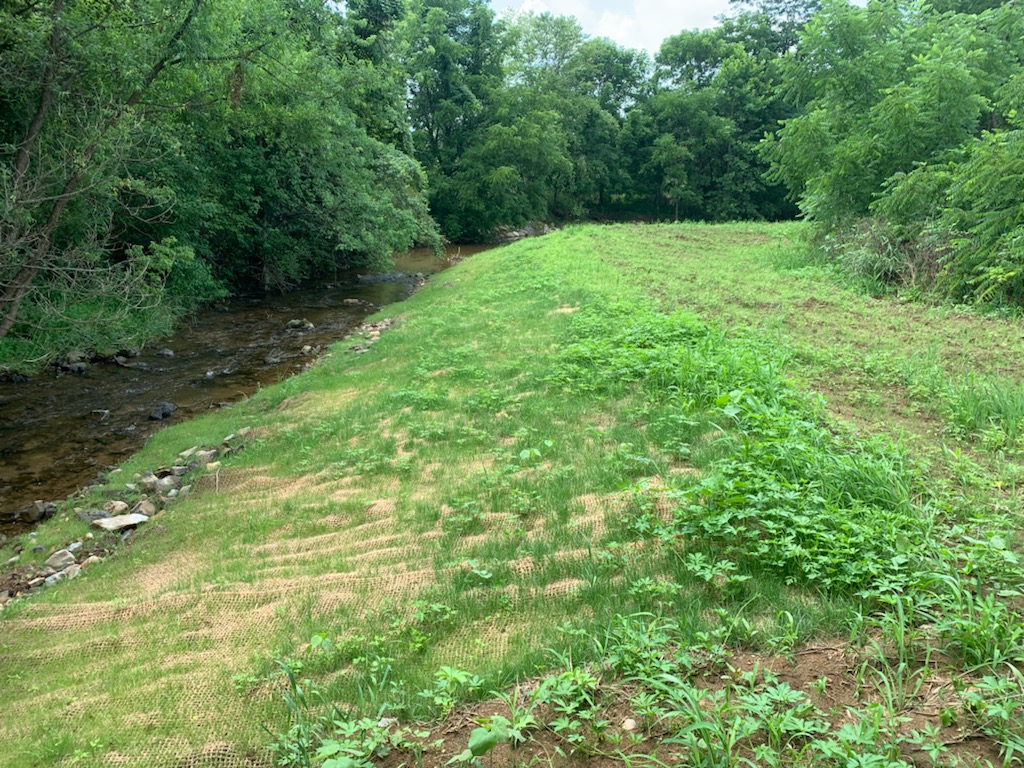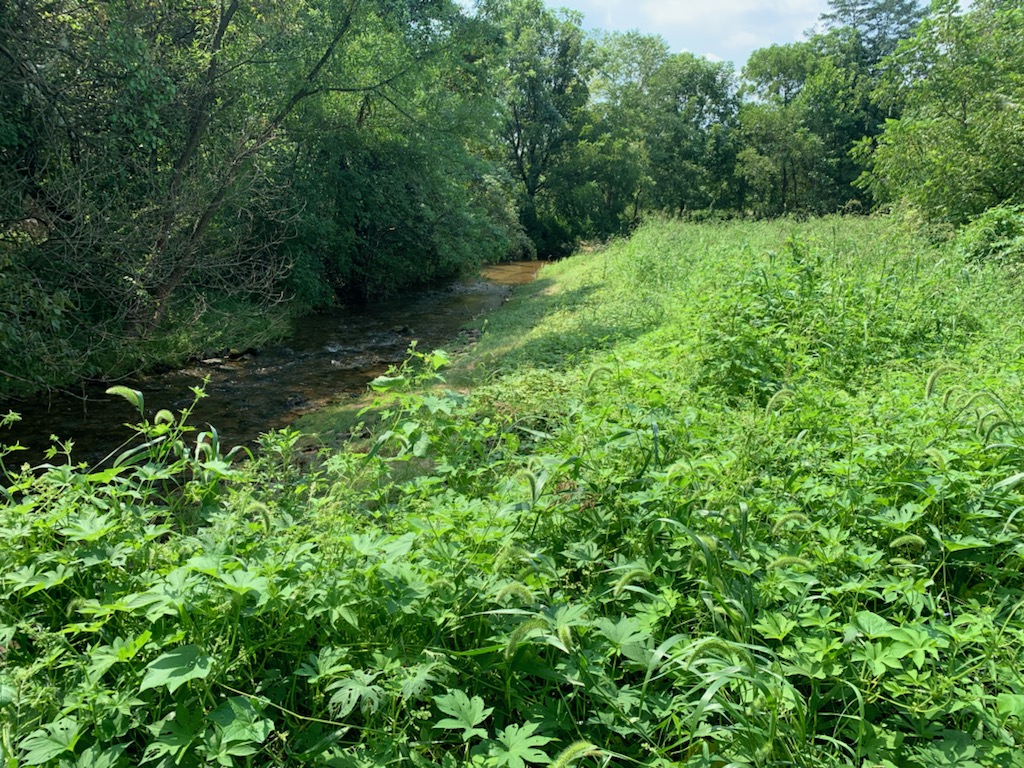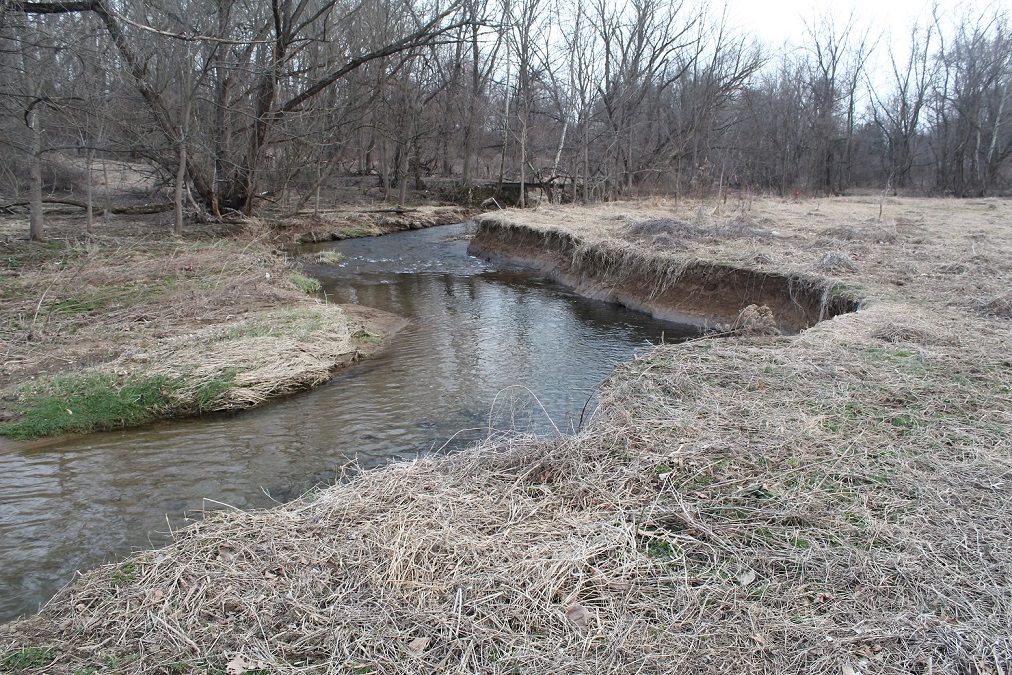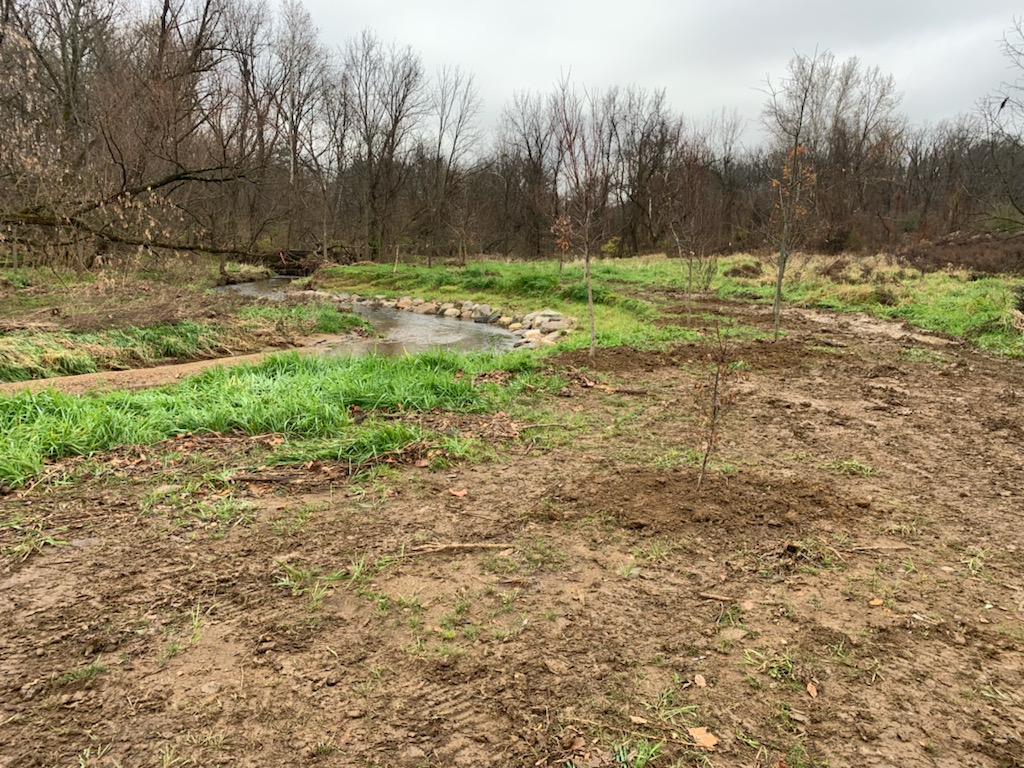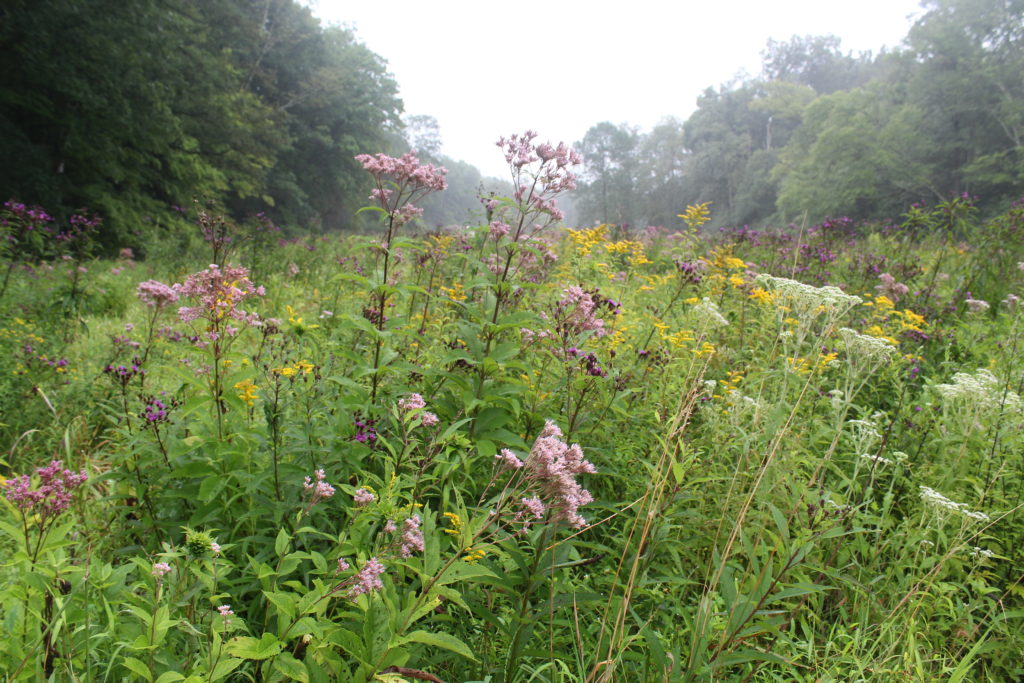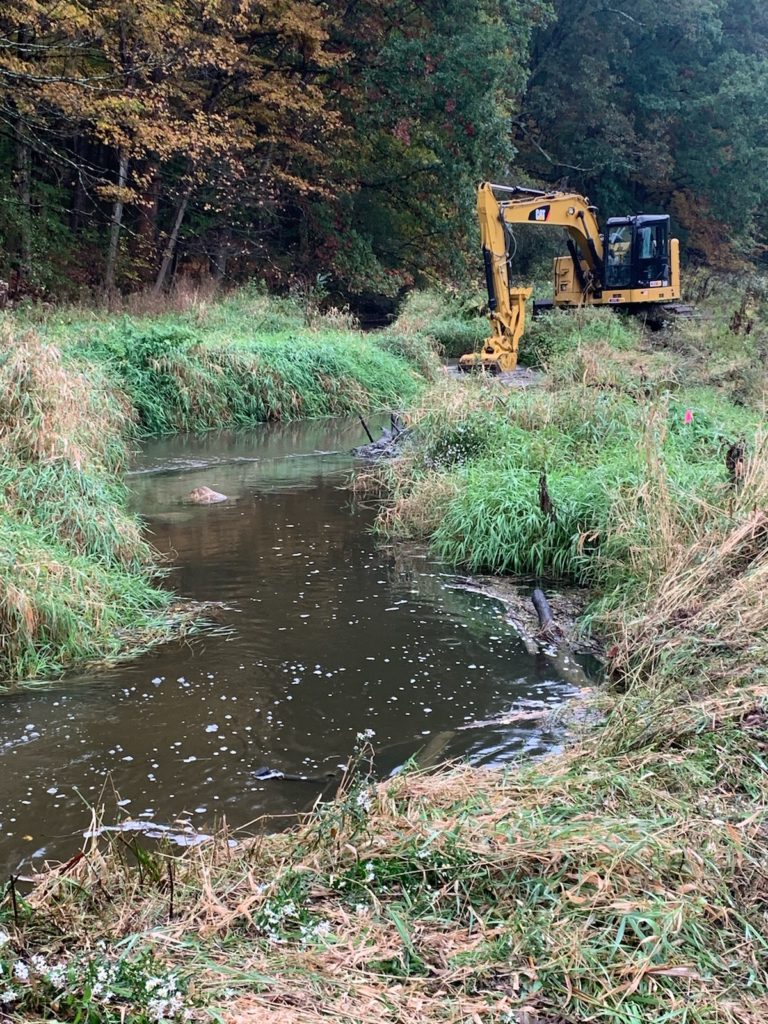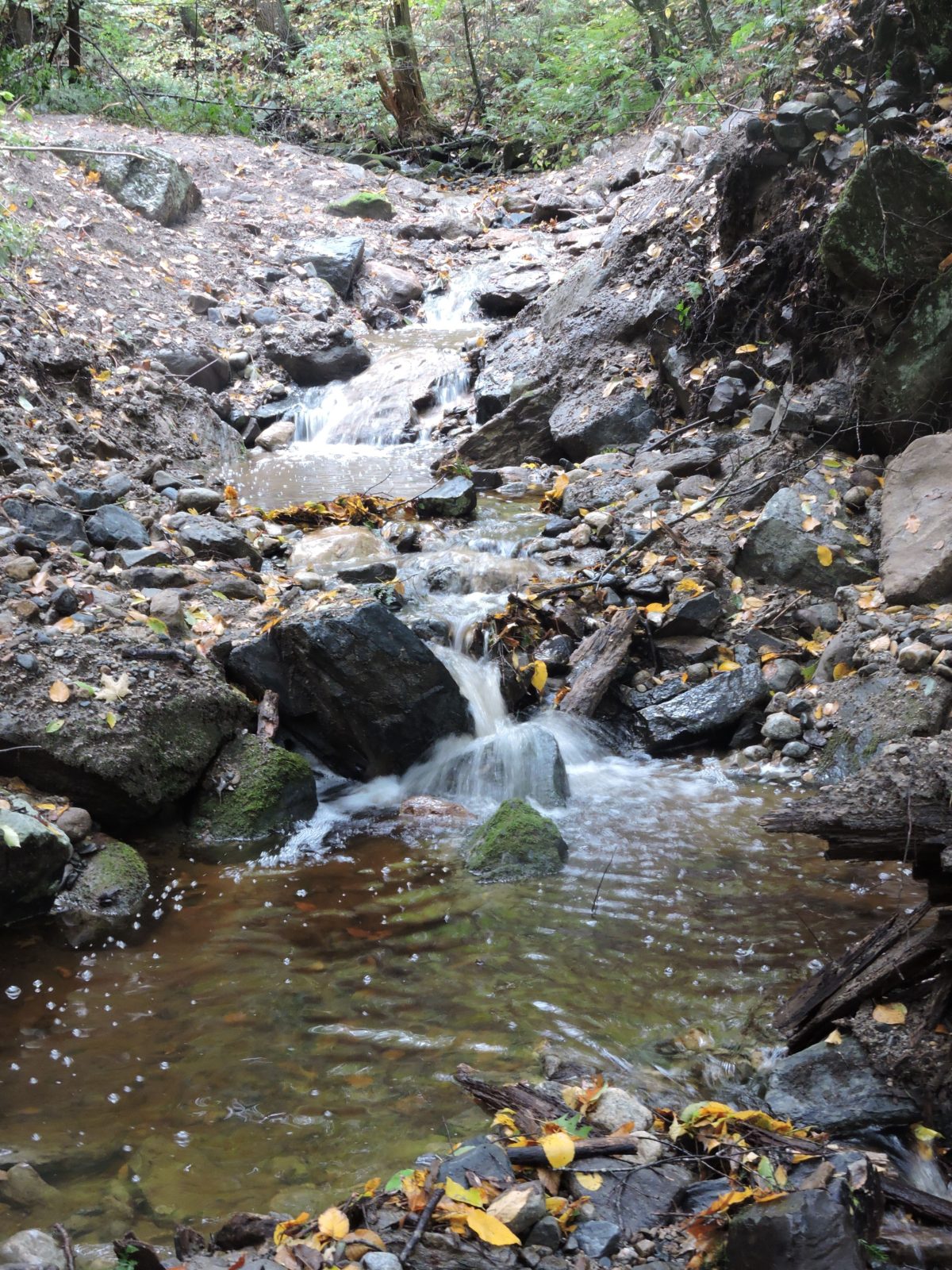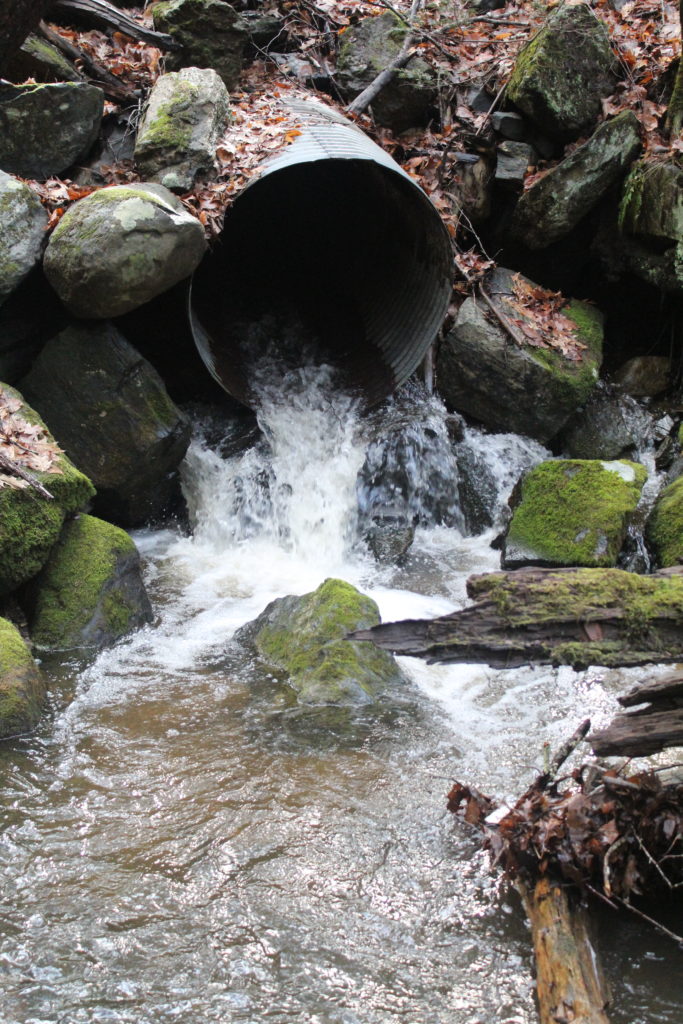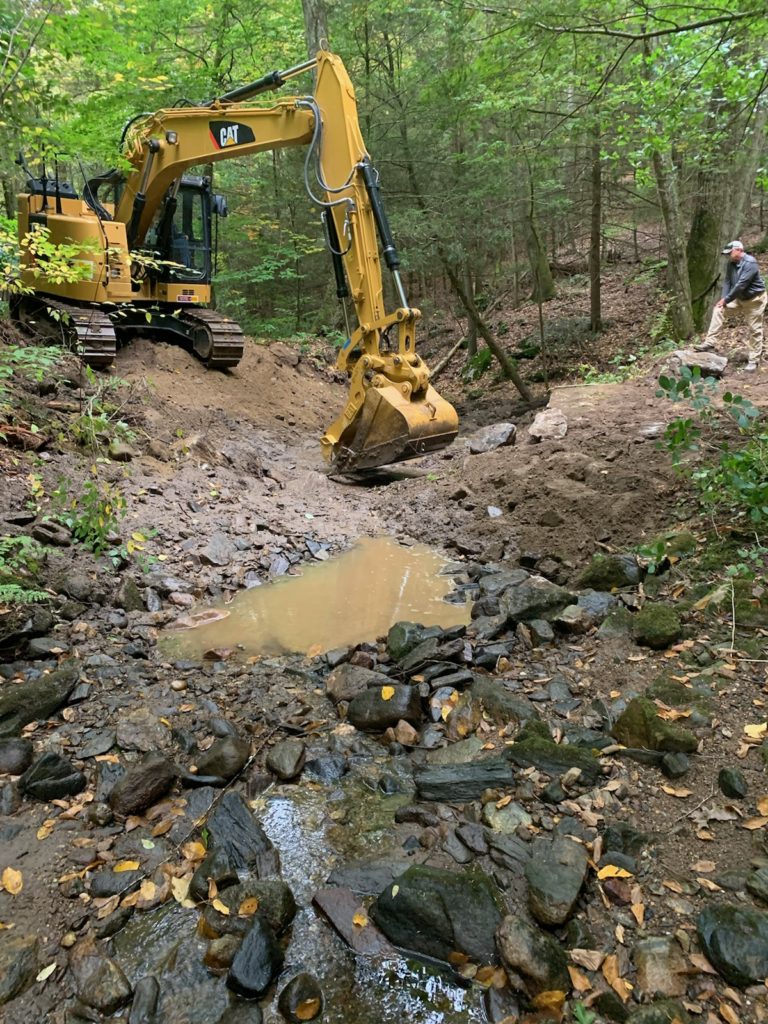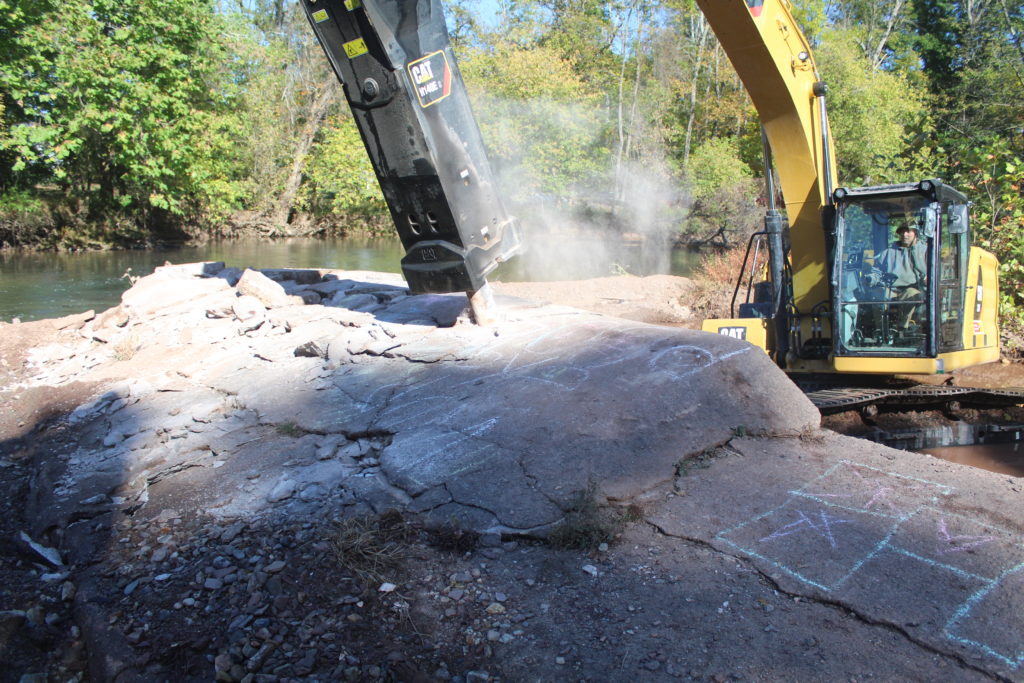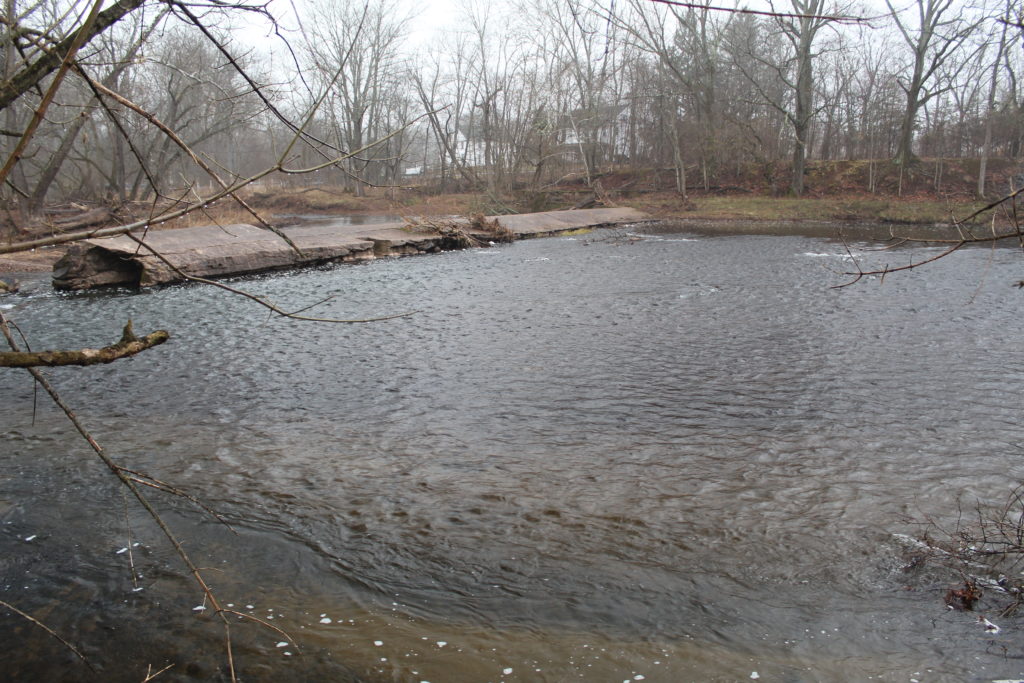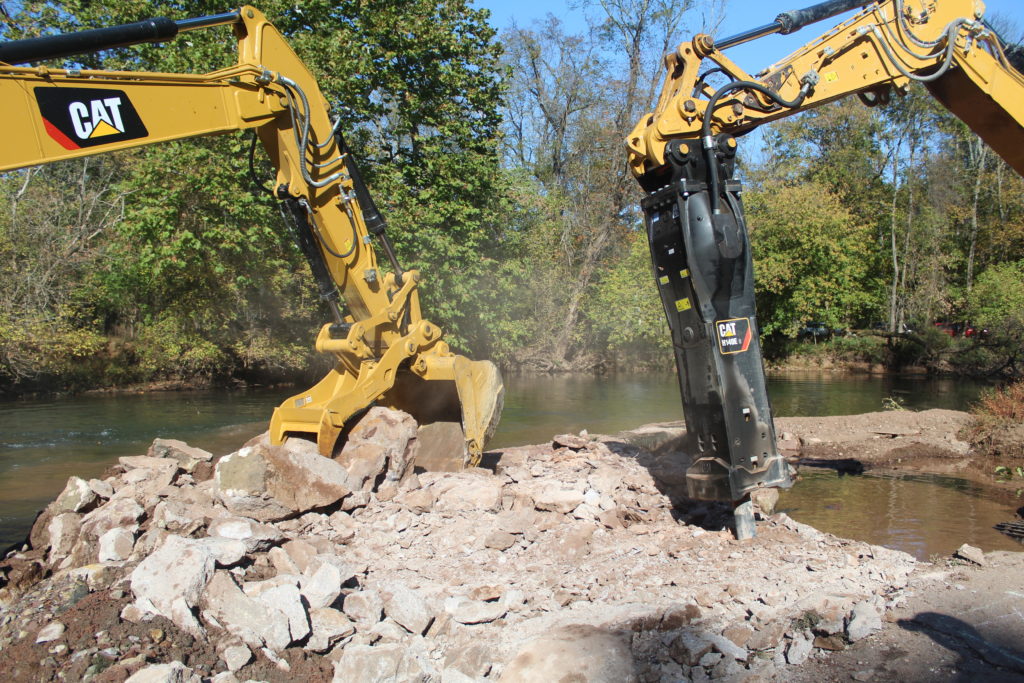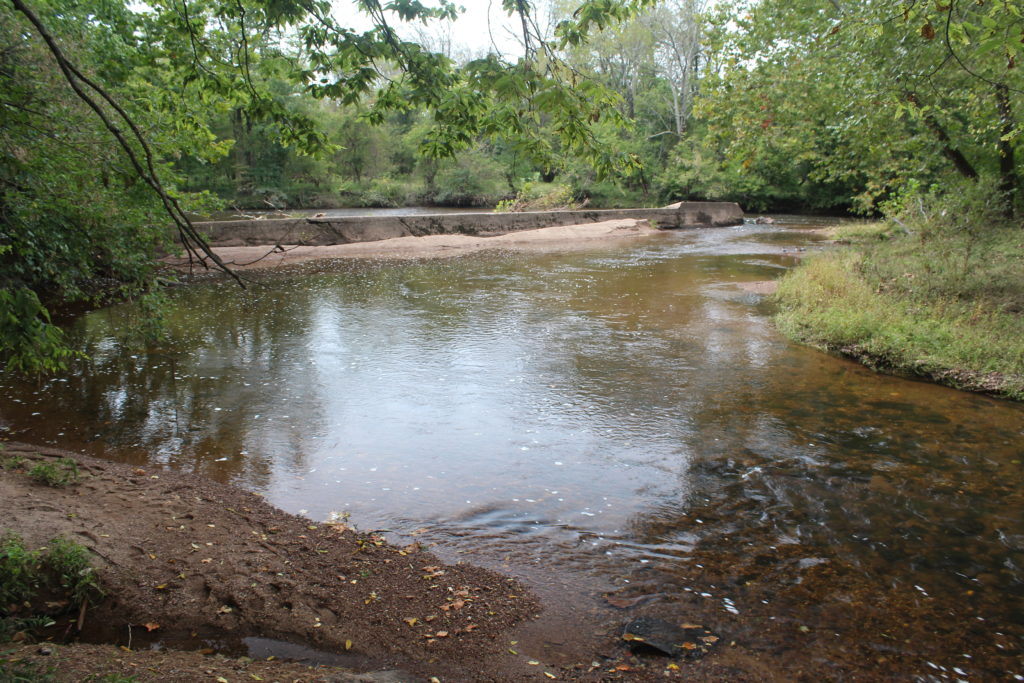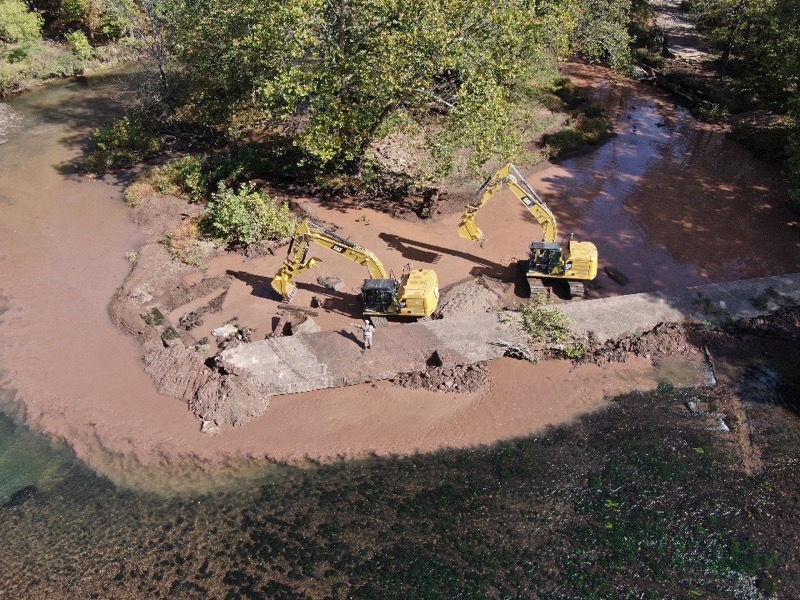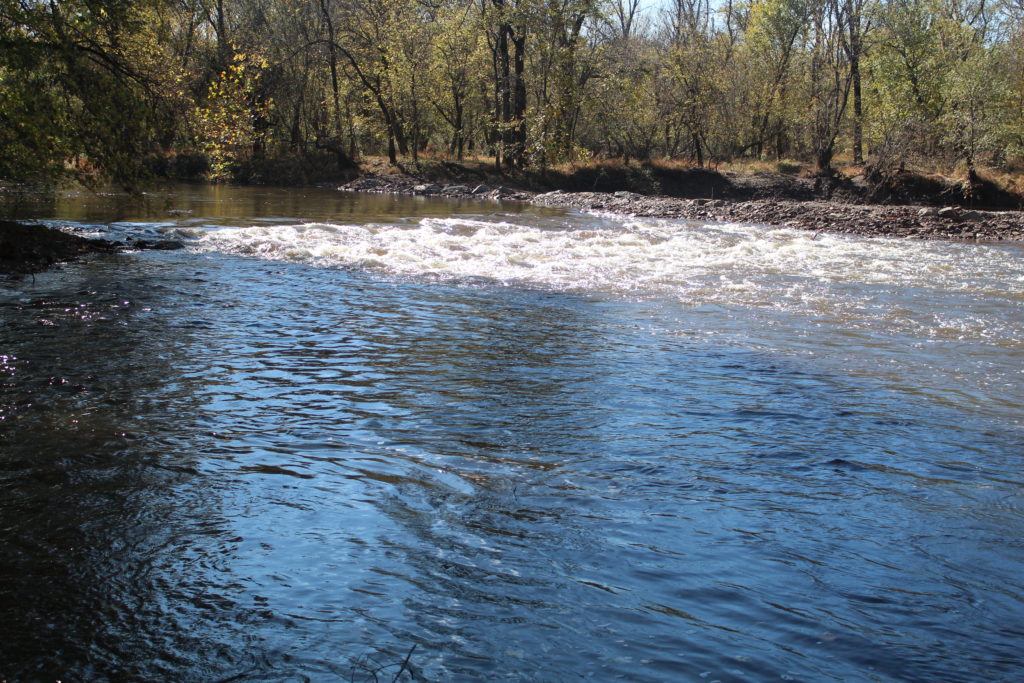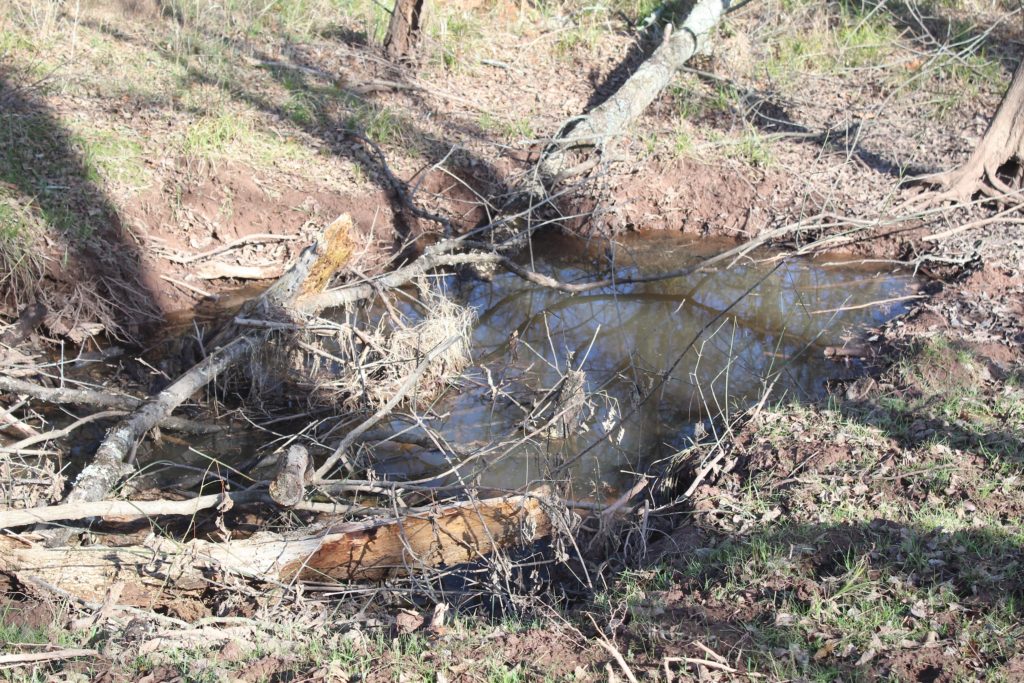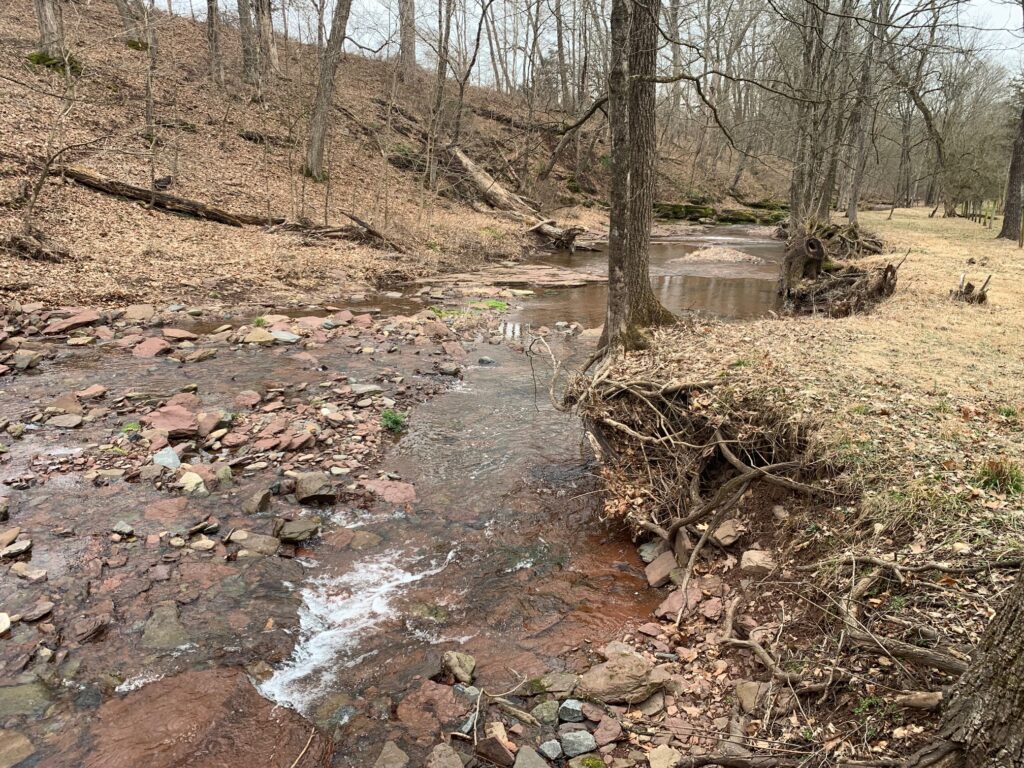
(Above: Copper Creek after Hurricane Ida. Note the “scalloped” banks)
Copper Creek, located in western Hunterdon County, New Jersey near the Delaware River saw a 500 year flood event during Hurricane Ida back in 2021. Parts of this stream, located in the Piedmont region, saw a widening of 12 to 20 feet in places with large amounts of cobbles accumulating in lower gradient areas, forcing the stream into the right banks. Several landowners approached the NRCS for Farm Bill funds to address their bank erosion and for restoration of the banks an some of the in-stream habitat. The upper landower is the township of Kingwood in their Horseshoe Bend Park East, and the lower three landowners are private properties.
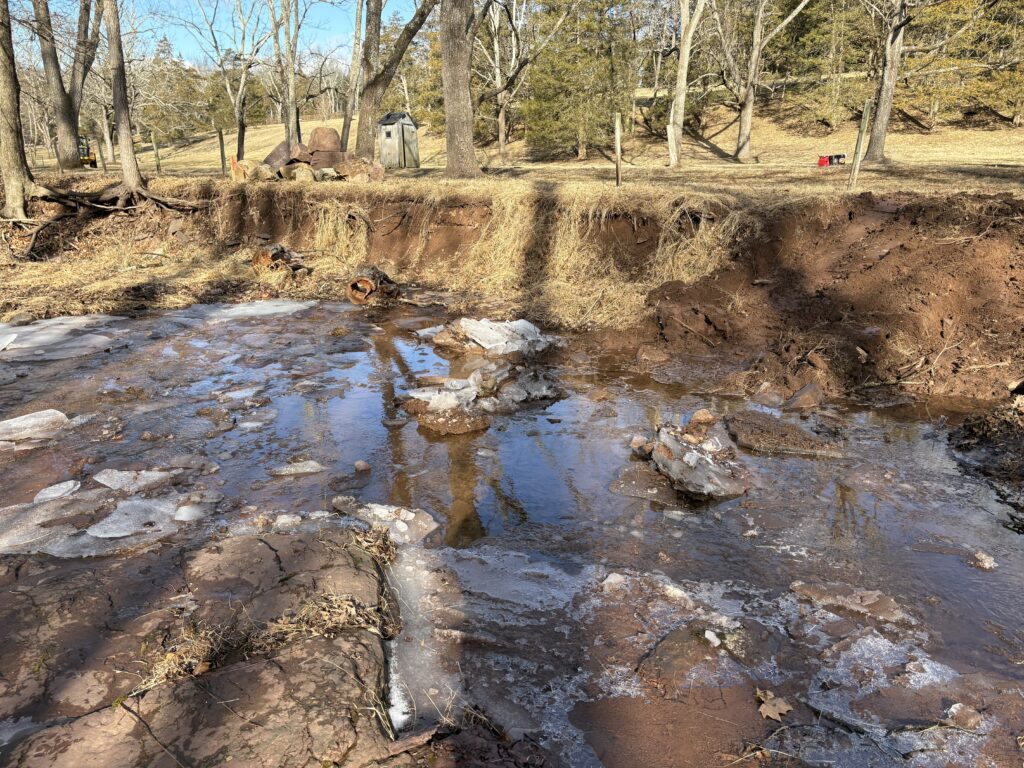
(Above: Copper Creek badly eroded banks post damage from Ida)
Trout Scapes River Restoration performed the design and the construction of this restoration in January 2025. This is not a wild trout stream and there is the presence of a state listed salamander that required us to work during the salamander’s brumation period which is winter months. Working in temps as low as minus 11, we had our struggles with ice and starting machines each morning, but we prevailed and completed the work in approximately two weeks. We will be going back to live stake three banks where we re-sloped them from 1:1 to 3:1 and laid down coir matting which is coconut husks woven into a rolled matting, seeded underneath, and staked in place along with the key trenches they lay in buried to capture them and prevent high flows from pulling them out while the native herbaceous seed mix and live plant stakes take root later this year and further hold the coir matting in place until it rots away in three to five years as designed. Additional native trees and shrubs will be planted by the landowners using containerized plants after our live stakes have been installed. The stream can now handle the larger flows we are seeing these days as the climate warms and rain events become more intense at times.
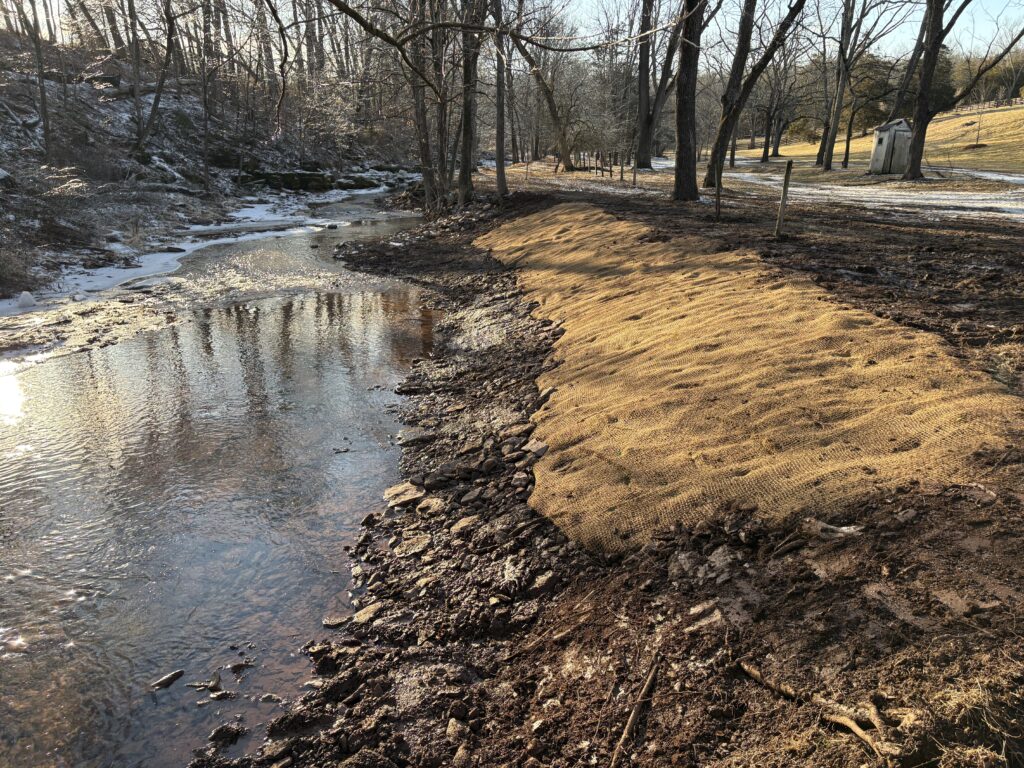
(Above: A restored bank that was re-sloped from 1:1 to a 3:1 slope, seeded, then coir matting was installed. This site and others will see live stakes added in Spring ’25)
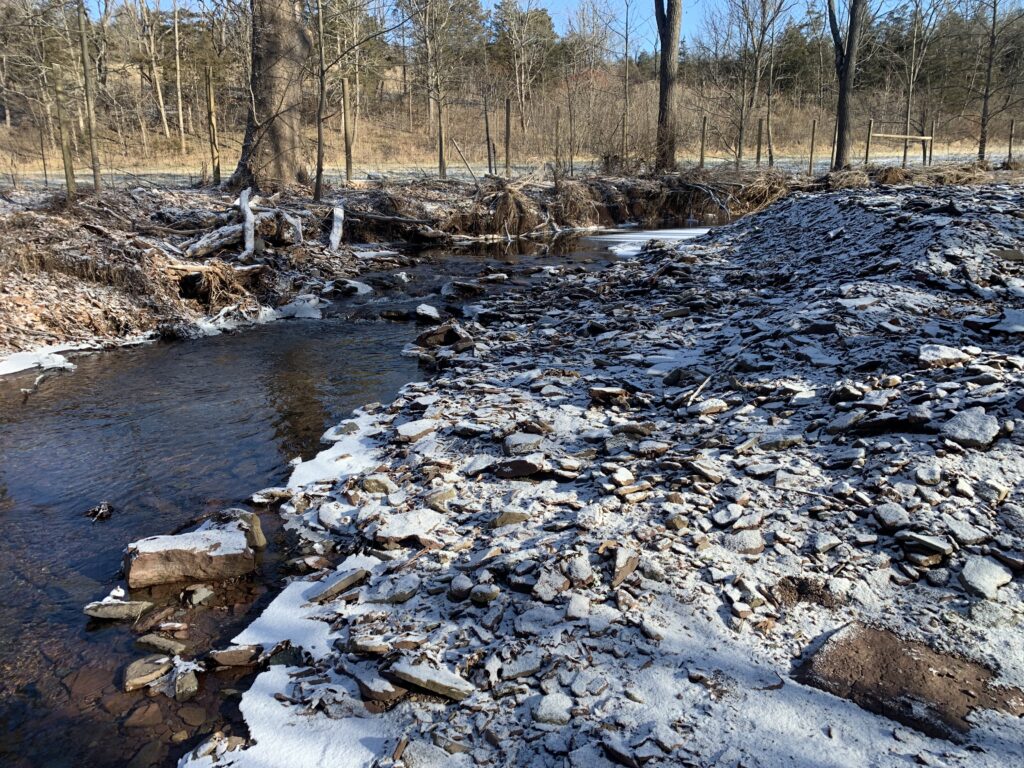
(Above: one of the upper banks that was where the stream widened by up to 25 feet. Note the accumulated cobbles which “pushed” the stream into the right bank)
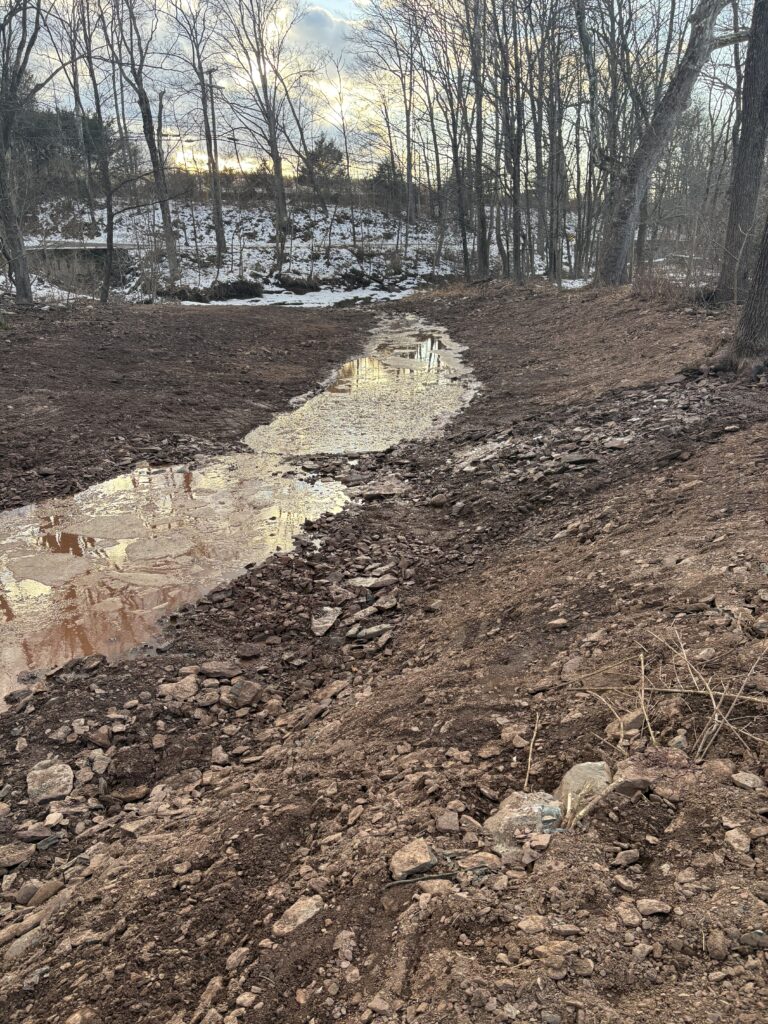
(Above: the same section post restoration. A combination of boulder barbs/deflectors, toe armoring, and boulder cross veins were installed by our crews to prevent future erosion of the banks and focus flows into runs and pools along this reach of Copper Creek)
